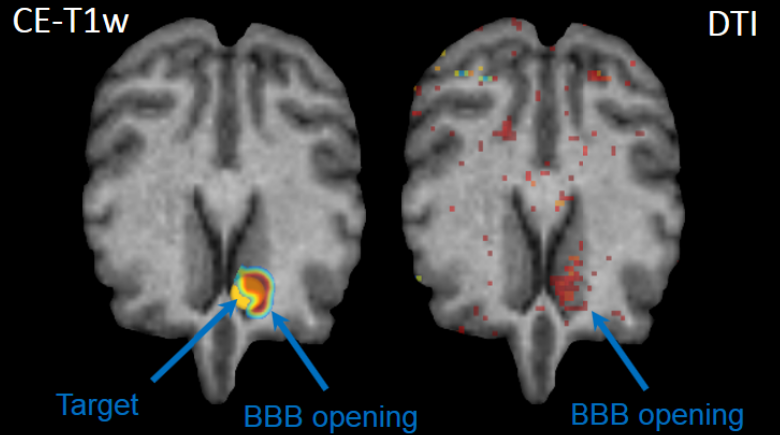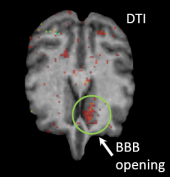
The blood-brain barrier (BBB) is a specialized structure that surrounds cerebral vessels and regulates molecular transport into the brain. While it is vital for maintaining brain homeostasis, it also blocks most of the drugs developed for treating brain diseases. The combined use of focused ultrasound (FUS) and circulating microbubbles is the only method that allows non-invasive, targeted and reversible BBB opening. FUS-mediated BBB opening is typically detected using contrast-enhanced T1-weighted MRI. However, this requires systemic administration of gadolinium-based contrast agents. Currently, there are concerns regarding gadolinium toxicity and retention within the brain tissue. Therefore, there is a need for alternative methods to confirm BBB opening.
Karakatsani et al. describe a contrast-free approach to detect FUS-induced BBB opening using diffusion tensor imaging (DTI). DTI evaluates the diffusion directionality within each voxel by applying different gradient directions. The authors hypothesized that localized BBB opening results in a reversible change in the diffusion of water molecules. They tested their hypothesis in a non-human primate model, which closely resembles the human anatomy.
The DTI images showed that fractional anisotropy within the targeted region increased by 82% after the FUS procedure, confirming that DTI is able to detect BBB opening without the use of contrast agents. DTI scans were compared to contrast-enhanced T1-weighted scans, which were acquired immediately after DTI. There was a 77% overlap in the contrast area detected with the two methods. The increased anisotropy was hypothesized to stem from anisotropic intravascular stress induced by the FUS beam and the resulting BBB opening as well as changes in the pattern of perivascular flow in the glymphatic pathway. This technique also increases the safety of the FUS methodology since contrast does not have to cross into the brain parenchyma. DTI-based BBB opening detection is currently being tested in clinical trials with Alzheimer’s disease patients.

